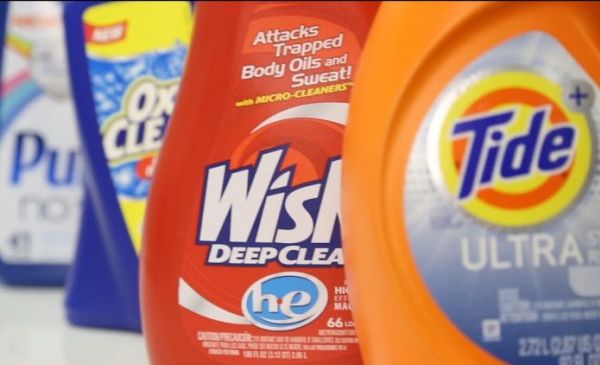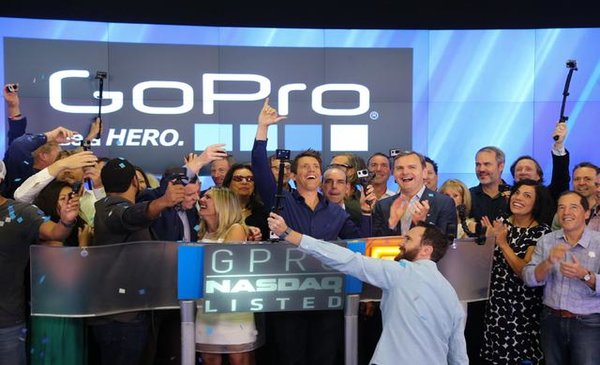This is arguably the most exciting time – ever – to be in business. We are experiencing sweeping changes worldwide that are affecting business today in ways that we have never seen before—and providing a once-in-a-lifetime opportunity. Furthermore, the speed and magnitude of the change is unprecedented – the dissemination of information via the internet has fundamentally changed the way firms compete and win. To illustrate, contemplate the following:
In less than five years, RIM (now BlackBerry) went from having a higher market share of the smartphone market than Apple and Samsung combined to a market share of less than 1%.
Such rapid change is unprecedented.
The Renaissance And Industrial Revolution. Michelangelo And da Vinci. Vanderbilt And Rockefeller.
We look back on periods of expansion like the Industrial Revolution and imagine them as exciting times with world-expanding possibilities wherein giants of culture and titans of industry changed our world. Bill Gates once said, “We always overestimate the change that will occur in the next two years and underestimate the change that will occur in the next ten.”
Today, the pace of change is so fast that it’s hard to overestimate. Indeed, at some point in the future, people will look back on today and view this as the greatest period of expansion and opportunity in the history of the planet—and a time like no other in the world of business. To understand why, think back to the early days of the internet and the “dot.com” period of the late 1990s. The claim then was that the internet would transform our lives and instant communication (e.g., email) would transform our productivity. However, while many indeed have worked harder with 24/7 connectivity, the impact on innovation, productivity and opportunity often hasn’t mirrored the hope and the hype.
Jobs, Zuckerberg, Musk, Bezos, Brin, Schmidt, Gates
Google was once “just” a search engine; however, now it is poised to also be dominant elsewhere — in internet advertising, mobile phones, television, internet provision and maps, for example. Indeed, we no longer exclusively rent hotel rooms through the usual hotel brands, but rent rooms or private apartments from Airbnb, we no longer hail taxis but “rent” rides from companies such as Uber or Lyft, and we increasingly rent cars as we need them, by the hour, through companies like Zipcar. Olli, an offering by Local Motors, will even pick you up (like Uber) in a driverless bus powered by IBM’s Watson – and the list goes on.
However, there is often a fine line between success and failure. Just think about the following:
- There were over 17,000 “YouTubes” before YouTube.
- There were 18 web search services before Google—some quite similar to Google.
- Net2Phone launched the year before Skype.
- Friendster (and many others) came before Facebook.
What’s So Different About Today? Why Do Some Succeed While Others Fail?
Imagine being a manufacturer of “white goods” (i.e., washing machines, dryers and refrigerators). For most of your career, you have competed on a combination of cost, distribution, sales and features – the latter ranging from the “beautiful” avocado colors of the 1970s to more recent stainless steel finishes. You may segment your market and have a range of offerings, lines and prices to match differing budgets and segments. Indeed, your entire career may have been spent on competing in the value chain, working the production system (to gain advantage on the cost side) and working the sales teams (to compete in a consolidating retail environment)—all in an attempt to squeeze margin inside of an intensely competitive industry.
However, in the early 2000s, white goods manufacturers were salivating over the prospect of charging huge margins on “internet-enabled” devices (i.e., refrigerators and other similar devices that would be connected to the internet via touchscreens on the devices). This connection could, for example, enable users to control the devices while away from home—and order food items to complete recipes. Indeed, manufacturers could potentially extract huge margins for these new internet-enabled devices. However, they ran into at least a couple of major obstacles. First, customers didn’t flock to the devices when they were introduced. There simply wasn’t enough benefit – smartphones didn’t have a huge penetration yet, so connecting to the appliances remotely was difficult. Besides, what exactly would you do with your refrigerator when away from home anyway? Second, once smartphones and tablets began to pervade the market, any functionality offered by your internet-enabled fridge could be replicated—with a great deal of additional functionality and mobility. So, why in the world would anyone need an internet-enabled refrigerator?
Fast Forward To 2020
Imagine a world where the objects around us can talk to each other. The baby is crying? Soothing music plays in response. A storm is coming or the ground is sufficiently moist? The irrigation system automatically shuts off. You drive your car out of the garage? Your lights turn off, heat or cooling adjusts, your alarm and motion sensors are automatically turn on and your doors automatically lock. Your coffeemaker coordinates with your clock so that it turns on five minutes before your alarm goes off — or your local Starbucks senses your approach and begins preparing your usual order. The tag on your dog’s collar sends you a text message in the event that Fido leaves the yard. The heating system in your swimming pool coordinates with your Outlook calendar and your basketball court automatically tracks your shot percentage. Well, maybe all of this isn’t such a good idea!
However, this isn’t the plot from some new movie, but rather a reality that is feasible today – and it’s just a matter of time before it becomes commonplace. Indeed, each individual part has generally been feasible for some time now; however, it is the interconnected and ubiquitous nature of the information that has transformed the merely feasible into business opportunities and modern-day realities.
Think: Ecosystems Not Platforms—And Platforms Not Products
Now, back to the white goods example. Imagine a smart refrigerator that can determine the expiration date on a carton of milk in your fridge and cross-reference its contents with what is available in your pantry to confirm your choice of recipe on a Friday night. You no longer need the touchscreen on the front of the refrigerator as originally envisioned – you can do all of that with your smartphone or tablet. However, what if the refrigerator could automatically order – and have delivered to your door – a new carton of milk to replace the one you used up the night before? Are you interested now in the premium that the manufacturer will charge? Indeed, there is a whole host of evidence from Wi-Fi-enabled smart televisions to home “assistants” that suggest that consumers are willing to pay more for the devices themselves when they are internet-enabled. Thus, there may be opportunities for companies that can interconnect it all seamlessly — in and out of the home.
So, what IS different about today’s markets? In short, interconnectedness. Today, the competitive game can reverberate not only throughout an industry’s value chain but also across markets. Thus, today’s competitive environment is no longer about simply being successful in an isolated part of the market – the new game is one of competition across different markets. Today, firms that win are those that interconnect – from products to ecosystems!
Contributed to Branding Strategy Insider by: William Putsis, Author of The Carrot and The Stick: A Strategic Control Approach To Winning In Today’s Connected Markets
The Blake Project Can Help: Build A Bigger Future In The Disruptive Brand Strategy Workshop
Branding Strategy Insider is a service of The Blake Project: A strategic brand consultancy specializing in Brand Research, Brand Strategy, Brand Growth and Brand Education



